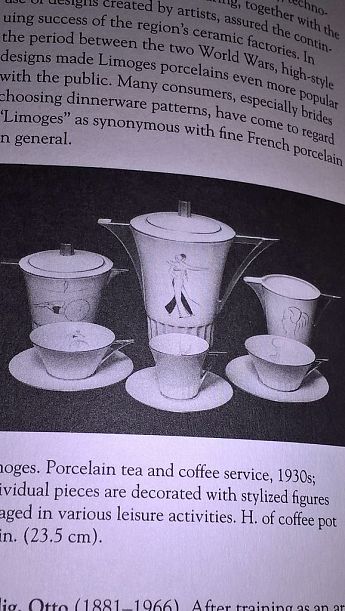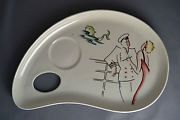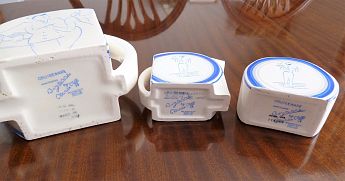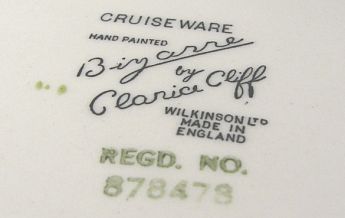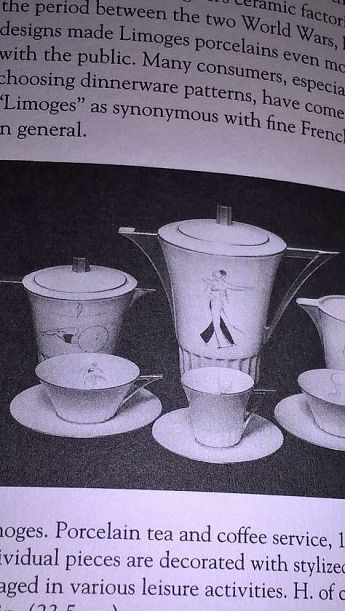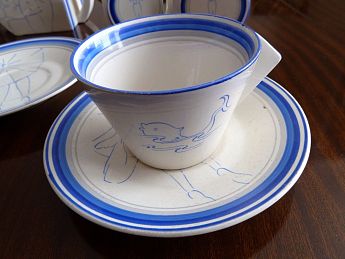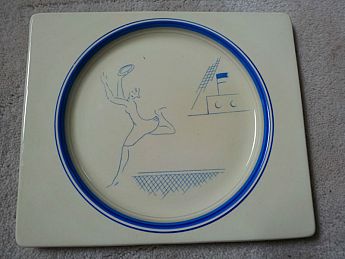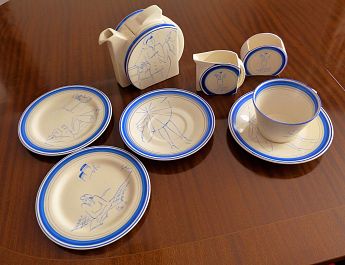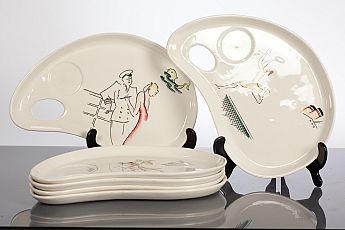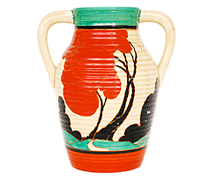Clarice Cliff Feature Articles
Firstly a little history about Limoges porcelain........
Limoges porcelain was produced from the 18th century (but slightly later than Sevres - 1756) but was not manufactured from one particular factory.
Limoges – a city in France - was the most famous European centre of vitreous enamel production in the 12th century, and Limoges enamel was known as Opus de Limogia or Labor Limogiae.[1]
Limoges had also been the site of a minor industry producing plain faience earthenware since the 1730s.
The manufacturing of hard-paste porcelain at Limoges was established by Turgot in 1771 following the discovery of local supplies of kaolin and a material similar to petuntse in the economically distressed area at Saint-Yrieix-la-Perche, near Limoges. The materials, which were quarried beginning in 1768, were used to produce hard-paste porcelain similar to Chinese porcelain.
A manufactory at Limoges was placed under the patronage of the Comte d’Artois, brother of Louis XVI, and was later purchased by the King in 1784, apparently with the idea of producing hard-paste bodies for decoration at Sèvres, although this never happened.
After the French Revolution a number of private factories were established at Limoges including Bernardaud and Haviland & Co.
As collectors we are all aware that Clarice Cliff, a determined and ambitious pottery designer in Stoke on Trent was interested in all aspects of pottery manufacture and production and that she was just as thorough about the designs and designers of European pottery as her studio always had a plentiful supply of appropriate magazines. There she ‘digested’ all that was fashionable as various pottery design movements were way ahead of the UK during the period 1900 to 1925. This is one of the reasons why she wanted to visit to now famous Art Deco Exhibition in Paris in 1925.
So what is the mysterious link between Limoges – famous for nearly two centuries for its refined and dainty patterned china/porcelain and the brashly executed Bizarre ware with its bright, some say gaudy, colours? Strangely enough it is her Cruise ware series of patterns – reflecting the life of the rich and famous who enjoyed the then current vogue of travelling the world on cruise liners. A curious collector recently came across a photo of a Limoges tea-set which featured a 1920 styled couple dancing and also a lady in beachwear sunning herself in a most relaxed fashion. Just a hint of what went on to become Cruise ware in Clarice’s vast output. It was Clarice who placed the fashionable emphasis on the few designs of this series of ware, but quite likely that she expanded the idea based on seeing a set like this one from Limoges.
The Cruise ware designs were printed in blue with hand-painted blue banding and lining on Ivoryware. On the palette cups and saucers the images were painted in black with hand applied enamel shading to emphasize the images. Cruise ware was probably phased out when the cups and saucers were produced in 1935/1936. The Cruise ware Stamford early morning set was produced in 1933. The actual style of the drawings is typically Clarice; there are similar cartoons with humorous verses in the Hanley (Stoke-on-Trent) archives. The firm who produced the Cruise ware prints also did Solomon Seal and Joan Shorter ware.
Doreen Mann
